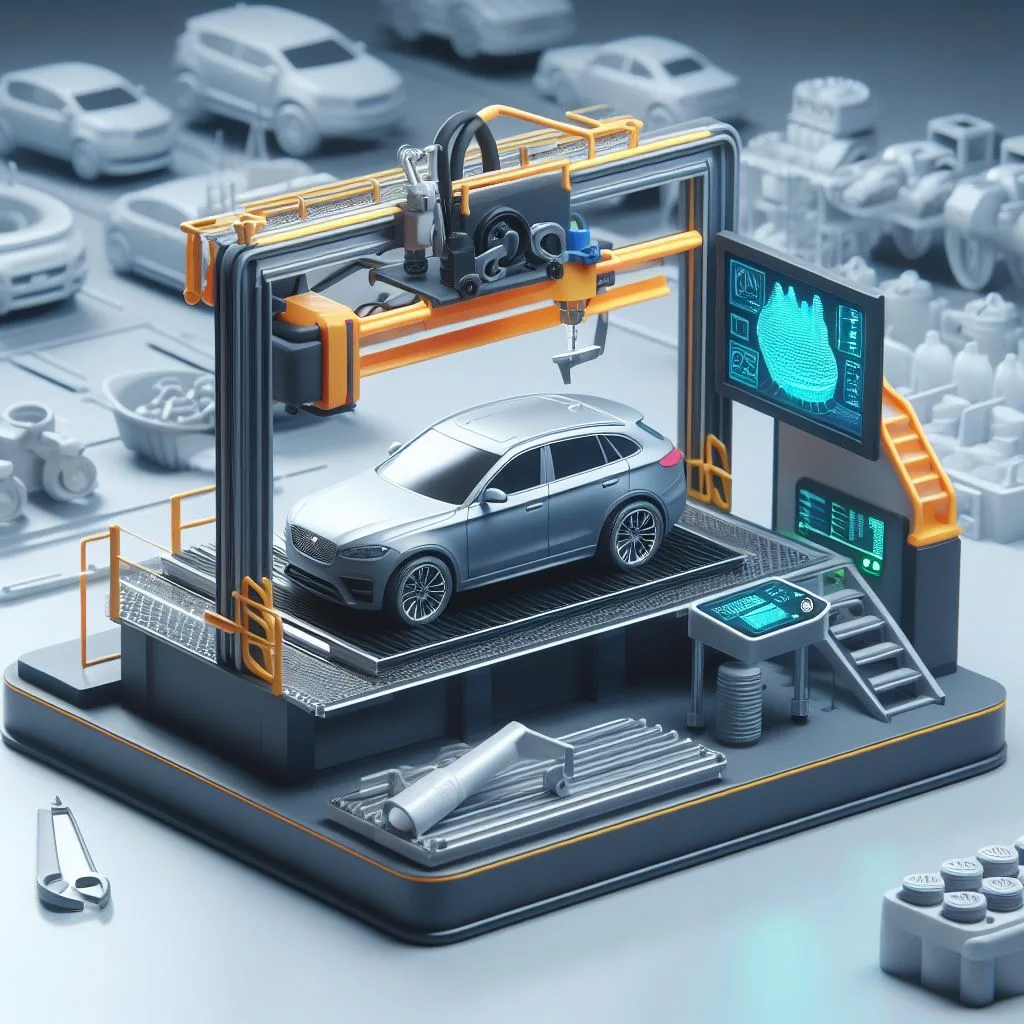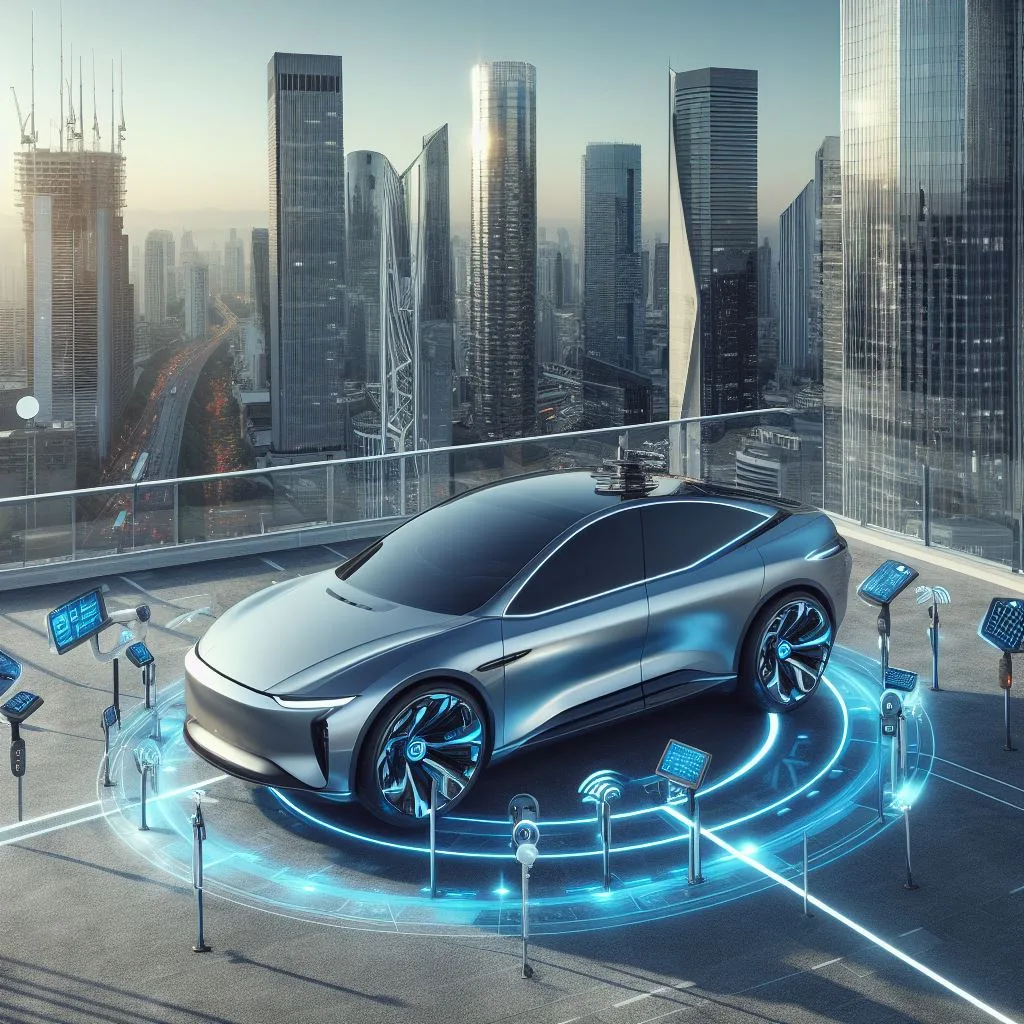Imagine a landscape where the megafactories of old times are giving way to a new breed of manufacturing, where multiple microfactories are taking center stage. This transformation is powered by the convergence of two cutting-edge technologies: the Internet of Things (IoT) and additive manufacturing. Together, they are redefining not just how we make products but also how we distribute them and even the very essence of product design.
Case Study of Local Motors
Olli was an innovative autonomous electric vehicle created by Local Motors, known for its pioneering work in the development of 3D-printed cars. Olli was a notable project that represented a vision of the future of transportation with a strong emphasis on sustainability, efficiency, and accessibility.
One of the most remarkable features of Olli was its use of 3D-printed components. Local Motors utilized 3D printing technology to manufacture various parts of Olli, a practice that allowed for rapid and cost-effective production. This approach not only streamlined the manufacturing process but also provided a high degree of customization. It enabled the production of tailored, unique components that perfectly suited Olli’s design and functionality, setting it apart from conventional vehicle manufacturing methods. Olli was an ambitious project that couldn’t be realized.
Local Motor was the first automotive company to talk vocally about batch production of vehicles in smart micro factories but unfortunately, despite getting a lot of attention and support, things couldn’t move.
Local Motors was shut down in January 2022 after they ran out of funding.
Arrival Microfactories: A glimpse into lean smart and small factories
Arrival, a UK-based electric vehicle (EV) manufacturer, has pioneered a new approach to manufacturing with the development of Microfactories. Unlike traditional automotive plants, which are sprawling and resource-intensive, Arrival’s Microfactories are compact, highly efficient, and designed for lean production. Lean manufacturing principles have been around for decades, emphasizing the reduction of waste, efficient resource utilization, and continuous improvement. Arrival’s Microfactories take these principles to the next level.
Hyperlocal Production: Arrival Microfactories are strategically located close to the point of demand, reducing the need for long-distance transportation of parts and finished products. The idea is to build locally and do cost-cutting in transportation and import duties!
Small Footprint: Traditional factories require massive amounts of space. Arrival’s Microfactories, in contrast, are compact and scalable. They can be set up in existing industrial spaces or purpose-built with a smaller land footprint. This not only saves on real estate costs but also allows for easy expansion and adaptation to changing production needs.
Customization and Flexibility: Microfactories excel at customization. Arrival’s production process is designed for flexible manufacturing, enabling it to produce a wide range of vehicle types on the same assembly line. This flexibility caters to varying market demands and consumer preferences.
Zero-Waste Production: Arrival places a strong emphasis on sustainability. By utilizing advanced materials and recycling practices, Microfactories aim to minimize waste generation. This commitment to zero-waste production aligns with the growing demand for eco-friendly manufacturing practices.
Arrival’s Microfactories represent a paradigm shift in manufacturing. They are agile, sustainable, and highly adaptable to market demands. As industries across the board embrace lean principles and smart technology, the concept of Microfactories is likely to proliferate, changing the way we think about production.
3D Printing in Industry 4.0
Additive manufacturing, often referred to as 3D printing, has come a long way since its inception. It was originally developed for rapid prototyping in the 1980s but has rapidly expanded its capabilities to become a disruptive force in modern manufacturing.
Over the years, 3D printing has evolved in several key ways:
Materials Advancements: Initially, 3D printing was limited to plastics and resins. Today, it can produce objects from a wide range of materials, including metals, ceramics, composites, and even biocompatible materials. This broad material palette has expanded its application across industries.
Scaling Capabilities: While 3D printing was initially used for prototyping and low-volume production, it has gradually evolved to support mass production. This scalability has opened new doors for industries such as aerospace and healthcare. Scaling has been possible due to technologies that have make 3D printing fast and precise.
As we stand on the cusp of Industry 4.0, 3D printing is set to play a pivotal role in shaping the manufacturing landscape.
Decentralized Production as a Function of 3d Printing and IoT
3D printing is poised to disrupt traditional supply chains through decentralized production. This innovative technology offers a host of advantages that can dramatically alter the way products are manufactured and distributed. One of the primary benefits is localized production, where products can be created closer to their intended destination, reducing the need for extensive shipping and transportation. This not only cuts costs but also minimizes the carbon footprint associated with long-distance logistics.
Furthermore, 3D printing leads to significantly reduced lead times. Products can be manufactured on demand and with remarkable speed, often within a matter of hours. This eliminates the need for large inventories and lengthy production cycles, enabling manufacturers to respond promptly to shifting market demands. By doing so, the technology mitigates the risk of overproduction and minimizes wastage, contributing to a more sustainable and efficient supply chain.
Additionally, 3D printing facilitates high levels of customization. Products can be tailored to meet individual or regional preferences without incurring substantial additional costs. This personalization not only enhances customer satisfaction but also ensures that products more precisely align with consumer needs. Moreover, 3D printing’s capacity to create intricate and complex geometries offers new design possibilities, resulting in more efficient and optimized products.
Market Dynamics
Traditional manufacturing methods often necessitate the use of mega-factories, large-scale investments amounting to millions of dollars, and high minimum order quantities (MOQ) to reach breakeven points. This has long favored a mass production paradigm, where economies of scale are essential for profitability. However, 3D printing is challenging this status quo.
3D printing has emerged as a game-changer by allowing physical product design to be an extension of digital product design. All you need is a digital design file of the product. It promotes the idea of distributed manufacturing, where products can be produced closer to where they are needed. This is achieved through the creation of standardized part kits that can be readily 3D printed and assembled locally. The result is a decentralized production model that can dramatically reduce the costs associated with large factories, extensive logistics, and MOQs.
So is there a possibility of printing a car in your backyard? the answer is Yes!












